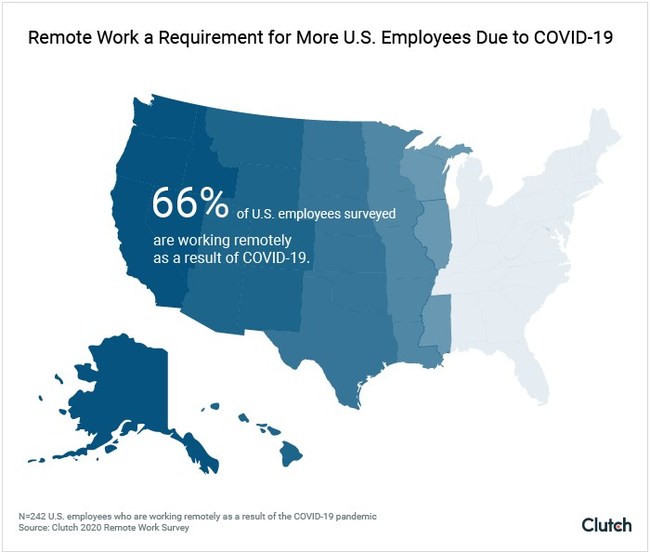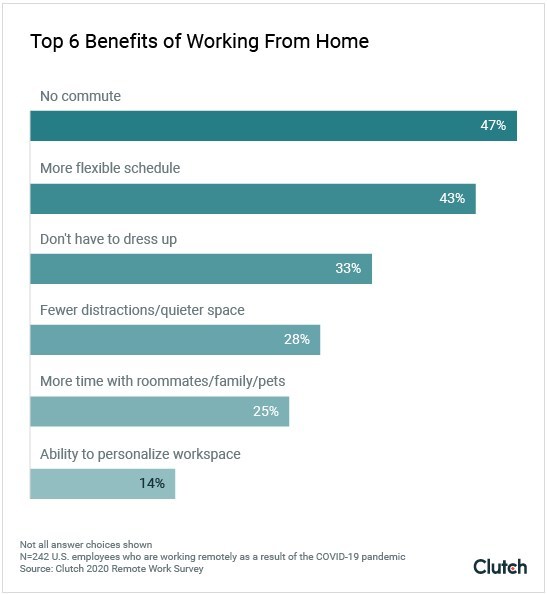The biggest benefits of remote working, according to surveyed employees, are not having a commute and a more flexible schedule. The biggest challenges are difficulties collaborating with co-workers and frequent interruptions.
Two-thirds of employees are currently working remotely at least part of the work week as a result of the coronavirus pandemic, according to a new survey from Clutch, a B2B ratings and reviews platform.
Clutch found that 44% of all workers are currently working from home 5 or more days per week, up from 17% before the pandemic.
HR Technology News: CDP Certified as the First and Only Chinese HCM Partner for Workday Global Payroll Cloud Solutions


Just 34% of workers aren’t working remotely at all during the pandemic, likely a direct result of most states only allowing essential out-of-home work or a reflection of workers who have been laid off.
Not Having a Commute Is Employees’ Favorite Part of Remote Work
People appreciate the personal time they have gained from not having a commute while working from home.
Nearly half of employees (47%) say no commute is a benefit of remote work. Employees also enjoy a more flexible schedule as a result of working from home (43%).
“I commute about an hour each way, so not commuting saves me both time and money,” said Sophie Conner, Marketing Manager of HaloITSM, a service desk software company. “With the extra time, I have been able to start running and have more time for my own hobbies.”
Many workers are taking advantage of the hours saved from not having to commute to work.
Collaboration Difficulties Is Employees’ Least Favorite Part of Remote Work
In a typical office setting, employees can ask a simple question by visiting colleagues at their desk and quickly getting an answer. Now, employees have to wait until colleagues open their email or sees their message before answering their question.
One-third of workers (33%) say it’s harder to collaborate with co-workers while working remotely.
“Before this, I could simply ask someone a quick question when they sat next to me,” said Charlie Worrall, Digital Marketing Executive at web design agency Imaginaire Digital. “Instead, I’ll email them, they take a while to respond, so I’ll call, and it takes up a little too much time.”
To reduce communication issues, however, many companies are turning to collaboration tools such as Zoom (36%), Microsoft Teams (19%), and Skype (17%).
HR Technology News: Berwick Partners, an Odgers Berndtson Company, Expands Into North America’s Senior Management Recruiting Space, Hiring Two Senior Consultants
Frequent Interruptions Are Also a Challenge of Working Remotely
It is hard for many employees to focus fully on work at home.
More than one-quarter (27%) say interruptions and distractions is a challenge of remote work.
“There is always something to do at home: books, TV, kids, and many more distractions at every turn,” said T.Y. Hlangwane, of PR firm Magnolia Haus Communications. “It takes a truly disciplined individual to work at home.”

